Leather is a beautiful and luxurious material, but it can be difficult to keep looking its best. If you’re not sure whether you can use linseed oil on leather, don’t worry! In this comprehensive guide, we will answer all of your questions and give you some valuable tips on how to care for your leather furniture or accessories.
Why Would You Want to Use Linseed Oil on Leather?
Leather is an animal hide that has been treated to make it more durable, pliable, and flexible. It is typically made from cowhide, sheepskin, or goatskin. The hide is tanned using tanning agents such as chromium salts, vegetable tannins, or alum to preserve the raw material as well as change its color and texture. Leather can be used for a variety of products including apparel, footwear, furniture upholstery, and car interiors.
Unfortunately, leather is pretty vulnerable to damage and needs to be treated regularly with a protective product. Moisture and stains are especially hard on leather, so good waterproofing and conditioner are essential. This is why people tend to seek a variety of treatments, and some may consider a linseed oil.
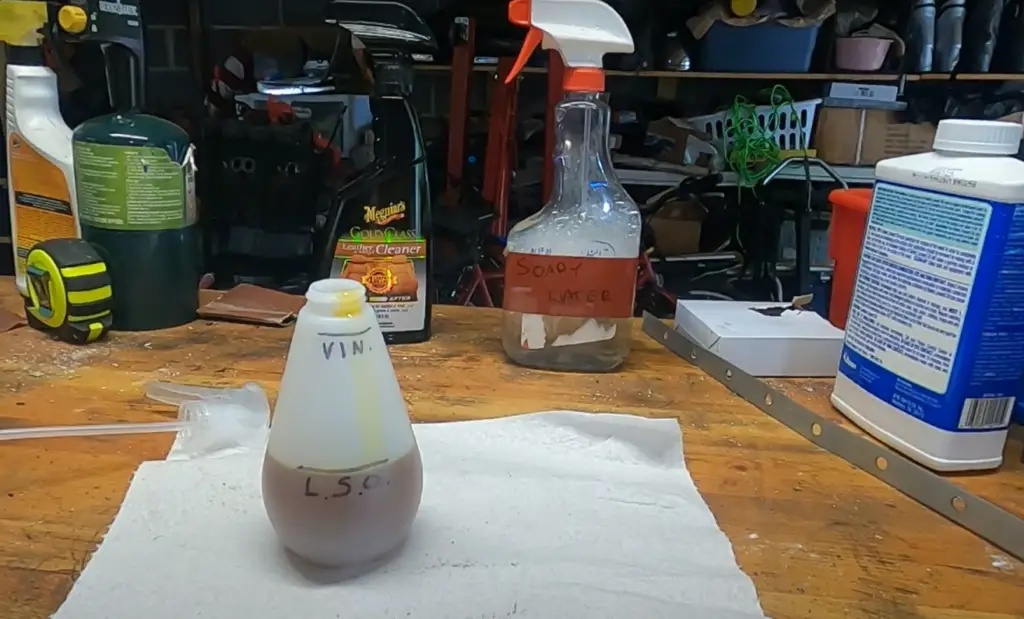
Can You Use Linseed Oil on Leather?
When it comes to deciding whether or not you can use linseed oil on leather, there are several factors that need to be taken into consideration first. After all, you don’t want to just put anything on your leather items, as this could cause more damage than good. In the following sections, we will cover how linseed oil benefits your leather, as well as discuss the potential risks of using linseed oil on leather.
Advantages of Linseed Oil
We shall begin with the advantages of linseed oil on leather. And compared to the other oil products, this one has plenty of advantages. Let’s discuss them in detail!
It’s an excellent moisturizer
Perhaps the biggest advantage of linseed oil is, it’s a great moisturizer for leather. Leather is a natural material, and like all organic materials, it needs to be moisturized periodically. Without proper care, leather can become dry and brittle, leading to cracks in the surface of the material. Leather also absorbs moisture easily when exposed to dampness or humidity; this makes leather susceptible to mold growth. Moisturizing your leather items regularly will help protect them from premature wear and tear while keeping them looking great for years.
And linseed oil has been used as a moisturizer for leather products since antiquity. When applied correctly, linseed oil helps keep the leather supple and soft while also providing an extra layer of protection. This can help keep your leather product from drying out and becoming brittle or cracking, as well as reducing scaling and fading.
It contains natural ingredients
The smaller benefit of linseed oil is that it comes from natural sources. This means you won’t be introducing any synthetic chemicals to your leather, which could potentially cause harm. Additionally, the oil itself is packed with nutrients and vitamins that can nourish the leather and help keep it looking great for longer.
If you are concerned about ethical products then linseed oil could be a great choice for leather care. The oil is extracted from the seeds of flax, and it does not harm the environment in any way.

It can add your leather a nice shine
It can protect your leather goods from elements
Leather is extremely vulnerable to the elements and requires special care to keep it looking its best. Sunlight, moisture, heat, and dirt can all cause damage or discoloration over time.
For example, moisture can rob your leather of its natural oils, leading to dryness and cracking. Sunlight can cause the leather to fade or crack. And dirt and dust can accumulate over time and make the leather look dull.
Linseed oil is a great way to protect your leather from all of these elements. It forms an invisible barrier between the leather and its environment, providing a layer of protection from the sun, moisture, heat, dirt, and more.
It keeps the leather soft
Leather is a natural material that needs to be softened, conditioned, and preserved if it is to stay in prime condition. Leather can become stiff, dry, and brittle with extended use or because of its exposure to elements such as sun, wind, or rain. It’s important to regularly maintain leather goods with the right products; otherwise, they can quickly become worse for wear. Suppleness is one of the main characteristics of a good leather product, and linseed oil can help maintain leather’s softness. Linseed oil can penetrate below the surface of the leather to nourish and moisturize it from within. It helps keep leather supple and flexible while providing a barrier against water damage.
It can prevent mold growth
Mold is a type of fungus that thrives in damp, humid environments. It typically appears as discoloration on leather items due to the presence of moisture or other organic matter. The mold can be white, green, black, orange or even purple in color depending on the type.
When exposed to the right conditions, like high humidity and warm temperatures, molds will grow quickly on leather surfaces. This is because leather is a porous material that absorbs moisture easily. This makes it an ideal breeding ground for fungus growth if not properly cared for and maintained.
So to keep your leather items looking great and in top condition, it’s important to take preventive measures such as avoiding humidity and drying out wet surfaces immediately. And when it comes to removing existing mold from leather, you may be wondering if linseed oil is an appropriate treatment option.
The linseed oil molecules have properties that are effective against common types of mold and mildew. Applying a thin layer of linseed oil to the affected area can help prevent further growth by creating a barrier that prevents the fungus from spreading. It also helps protect the leather from future mold damage by providing an extra layer of protection.
And same goes for moisture damage protection – linseed oil creates a protective film on leather that helps keep it dry and prevent the material from absorbing moisture. This is important to remember as moisture can contribute to mold growth, so preventing this is key to keeping your leather in good condition.

It’s incredibly easy to apply
Linseed oil is very easy to apply. Many other leather maintenance options suffer from difficulty in application. What’s important, is applying the product equally, so that the entire leather surface is covered and well-maintained. With linseed oil, it’s as simple as applying a thin layer of oil evenly to your item with a soft cloth or brush.
All you need to do is use a soft cloth, dip it in the container with linseed oil, and spread it evenly onto the leather surface. You should never apply the oil directly to the leather as this can make it greasy.
Not only will it save you time, but also will make sure that the entire surface of your leather item is properly moisturized with no missed spots. [1] [2] [3]
Disadvantages of Linseed Oil
Unfortunately, there are some disadvantages to using linseed oil on leather goods. And you absolutely need to keep these in mind before proceeding with the oiling process as you don’t want to risk damaging your item.
It doesn’t protect leather against stains
Leather is a natural material that, if not properly cared for, can be vulnerable to damage. Stains are one of the most common types of damage that leather furniture and clothing can suffer. So one of the main purposes of leather protection products is to provide a barrier between the material and any potential stains. Linseed oil does not offer this protection which is unfortunate because it means that you’ll have to be extra careful when using items treated with the oil.
It can leave a sticky residue
Another key consideration when it comes to using linseed oil on leather is the fact that it can leave a sticky residue behind. This can be difficult to remove and may attract dirt and dust, making your item look less than desirable over time.
And the residue of any kind isn’t the most pleasant thing ever, so it’s important to take this into account and make sure that you’re comfortable with the potential effects of using linseed oil on your leather item before you proceed.
It can stain your clothes
While linseed oil might not be good at protecting the leather from stains, it can make a mess of your own clothes. The oil is very difficult to remove once it has soaked into fabric and can cause unsightly stains that are impossible to get out. It’s, therefore, important to take special care when handling items treated with linseed oil, especially if you’re wearing clothing that could potentially be stained in the process.

It can make latex deteriorate
One of the other potential issues that can arise from using linseed oil is the fact that it can make latex deteriorate. This is especially true if you use too much oil or don’t wipe away any excess afterward.
Latex is commonly used in leather products, so this should be taken into account before you start to apply linseed oil to your item. And if there’s any doubt about whether or not your product contains latex, then it’s best to err on the side of caution and avoid using linseed oil altogether.
It can’t penetrate saturated leather
Saturated leather is a type of leather that has been stained or dyed to a specific color and sealed with a finish. This type of leather is often used for furniture, clothing, shoes, and other items that are frequently exposed to water or liquids. Typically, saturated leather is not treated with oils as this may make it difficult for the finish to adhere properly.
And this is exactly the case with linseed oil. It cannot penetrate saturated leather, so it’s not the best option for this type of material. If you have an item made from saturated leather, then it’s best to use a different product or method to protect and care for it.
It can smell
The last potential downside to using linseed oil on leather is that it can have a distinct smell. The smell might not be unpleasant, but it could linger for some time after application and you may find that you don’t enjoy it. In this case, it’s best to look into other options as there are plenty of odorless leather care products available.
It can rot
Finally, it’s important to note that linseed oil can rot over time. This is because the oil breaks down when exposed to air and moisture, which can cause a foul smell and leave your item looking worse for wear. After all, this oil is made of natural materials and is not as durable or long-lasting as synthetic products like waxes and sealants.
To avoid this issue, you should make sure that you keep any treated leather items in an airtight container or bag. This will help reduce the amount of air and moisture that comes into contact with the item and should extend its lifespan significantly.
By taking into account these potential disadvantages of using linseed oil on leather, you’ll be able to make an informed decision about whether this is the right method for protecting your item and keeping it looking its best for years to come. So keep these considerations in mind as you explore this topic further! [1] [2] [3]
FAQ
What is linseed oil?
Linseed oil, also known as flaxseed oil, is an edible oil derived from the dried ripened seeds of the flax plant. As a vegetable-based oil, it is 100% natural and non-toxic. It has been used for centuries in food preparation, furniture making, and painting — and for its moisturizing benefits when used on leather surfaces.
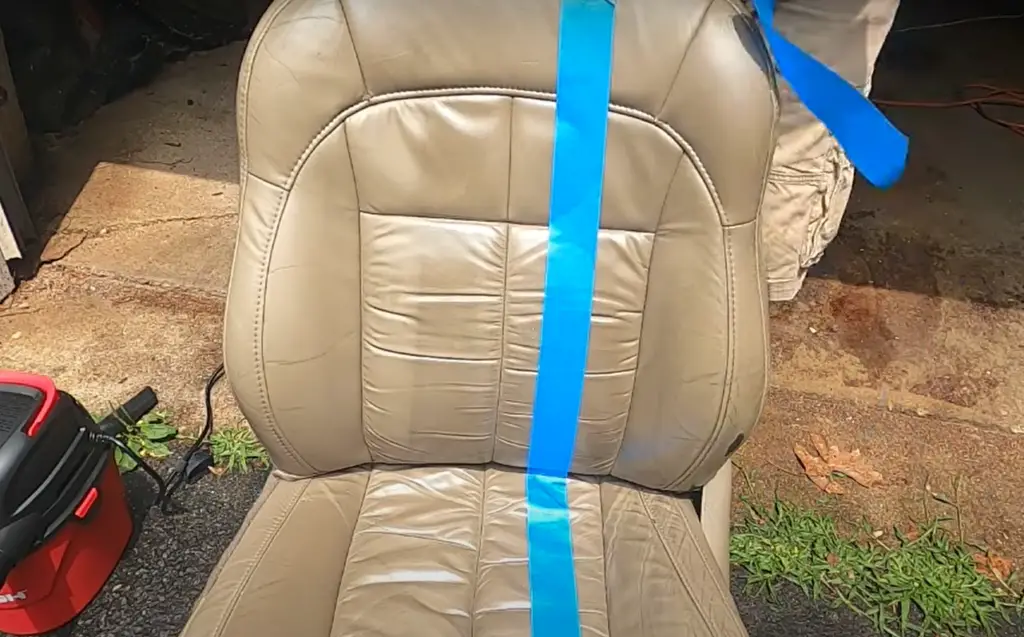
The most important factor in the use of linseed oil on leather is understanding how the process will affect different types of leather. Linseed oil works best with unfinished, or “naked,” leather because it soaks into the material and helps to protect and preserve it. Finished leather, or those which have already been treated with a protective coating like wax, would not be suitable for this kind of treatment as it could damage the finish without providing any benefit.
What oil can I use on leather?
The best oil for leather is usually almond, coconut, or linseed oil. Almond and coconut oil are both natural oils that work wonders to nourish and care for leather, providing it with a soft, supple texture. They also help to protect the leather from dirt and debris. Linseed oil is a great alternative if you’re looking for something more traditional. It’s derived from flax seeds and works as an excellent moisturizer for leather goods.
Just keep in mind the type of your leather item before applying any oil as some leathers may not be suitable for use with oils. For example, suede and nubuck leather should never be treated with oil as it can cause irreparable damage.
How do you treat the leather with linseed oil?
When treating the leather with linseed oil, it is important to remember that the oil should be applied sparingly. Too much of it can cause discoloration and staining.
Start by cleaning the leather surface thoroughly with a slightly dampened cloth, removing any dirt or debris from its surface. Next, using a soft cloth, rub a small amount of linseed oil onto the leather in a circular motion. Allow the oil to sit on the surface for about 15 minutes before wiping off any excess with another clean, dry cloth. This process can be repeated as necessary for the best results.
Once everything is done, simply leave the leather to air dry for about 24 hours. After that, you’ll be ready to enjoy your renewed and refreshed leather!
What oil restores leather the best?
Depending on the type of leather, there are a few oils that can be used to restore it. Generally, the most recommended oil is mink oil or neatsfoot oil as they soak into the leather and condition it well. However, you may also use linseed oil on leather if you prefer. It works just as well but should be applied sparingly as it could cause discoloration of some leathers.
Almond oil is also a great option, as they are natural and non-toxic. Make sure to test a small area before applying it over the entire leather surface to make sure it is compatible with your type of leather.
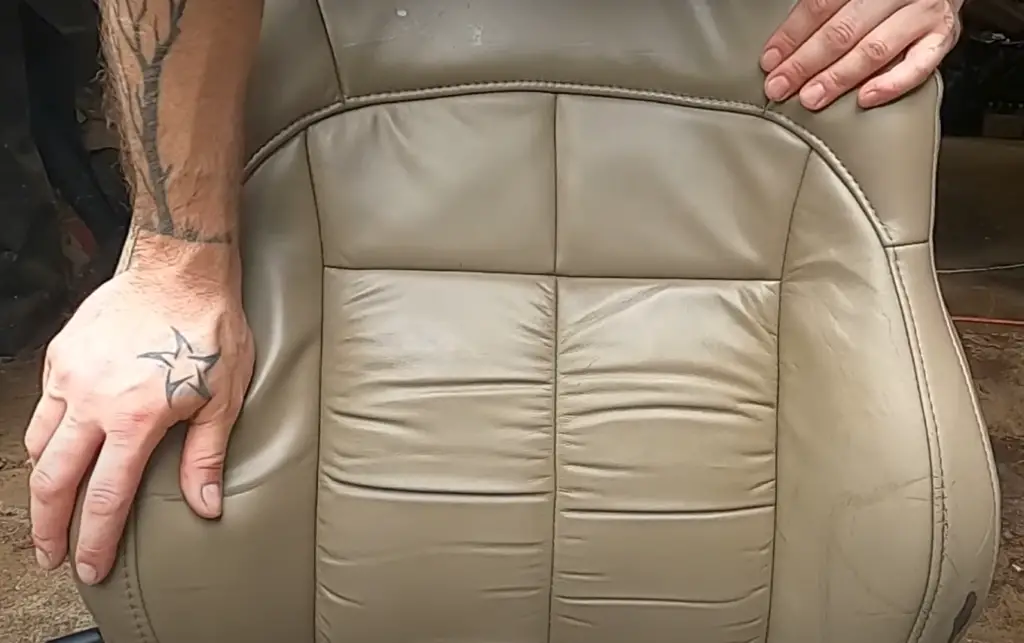
How do you rehydrate leather?
However, some people opt to use linseed oil as an alternative way to rehydrate the leather. Linseed oil is derived from the seeds of the flax plant and has been used historically for a variety of purposes, including furniture making and leatherwork. However it has a smell that many find unpleasant, and it can take several days to fully cure.
Useful Video: Will Boiled Linseed Oil Clean Leather Seats?
Conclusion
Taking care of your leather is extremely important, after all, it’s a precious investment for any wardrobe. Knowing if and how you can use linseed oil on leather is therefore essential, and this guide has covered the basics to get you started!
Linseed oil is a natural product that does wonders for many materials, including protecting the leather from cracking and drying out. It can moisturize and nourish the leather, making it look and feel great. And it can protect your leather pieces from moisture damage and water stains.
However, it’s important to test it in advance with an inconspicuous spot before applying it to your entire item. To ensure the best results, use a small brush or cloth to apply the oil evenly over the surface of the leather and let it sit overnight before buffing away any excess oil.
Unfortunately, you also won’t be able to use linseed oil on finished leathers, such as suede and nubuck, as it will cause irreparable damage, or in the case of saturated leather – it won’t be absorbed. In such cases, you would be better off using a leather conditioner for your leather type.
In addition, keep in mind that linseed oil won’t 100% protect your leather from all the stains and damage out there. To keep your leather looking and feeling its best, you should also use other protective products intended specifically for leather. Regularly clean and condition your leather with a suitable product to ensure maximum lifespan.
We hope this guide was helpful in informing you on whether or not you can use linseed oil on leather. If used properly, linseed oil can be an excellent addition to your regular leather cleaning routine, giving those beloved items a healthy and beautiful look that lasts. Good luck!
References:
- https://www.libertyleathergoods.com/leather-oil/
- https://favoredleather.com/can-you-use-linseed-oil-on-leather/
- https://workgearz.com/can-i-use-linseed-oil-on-leather-boots/

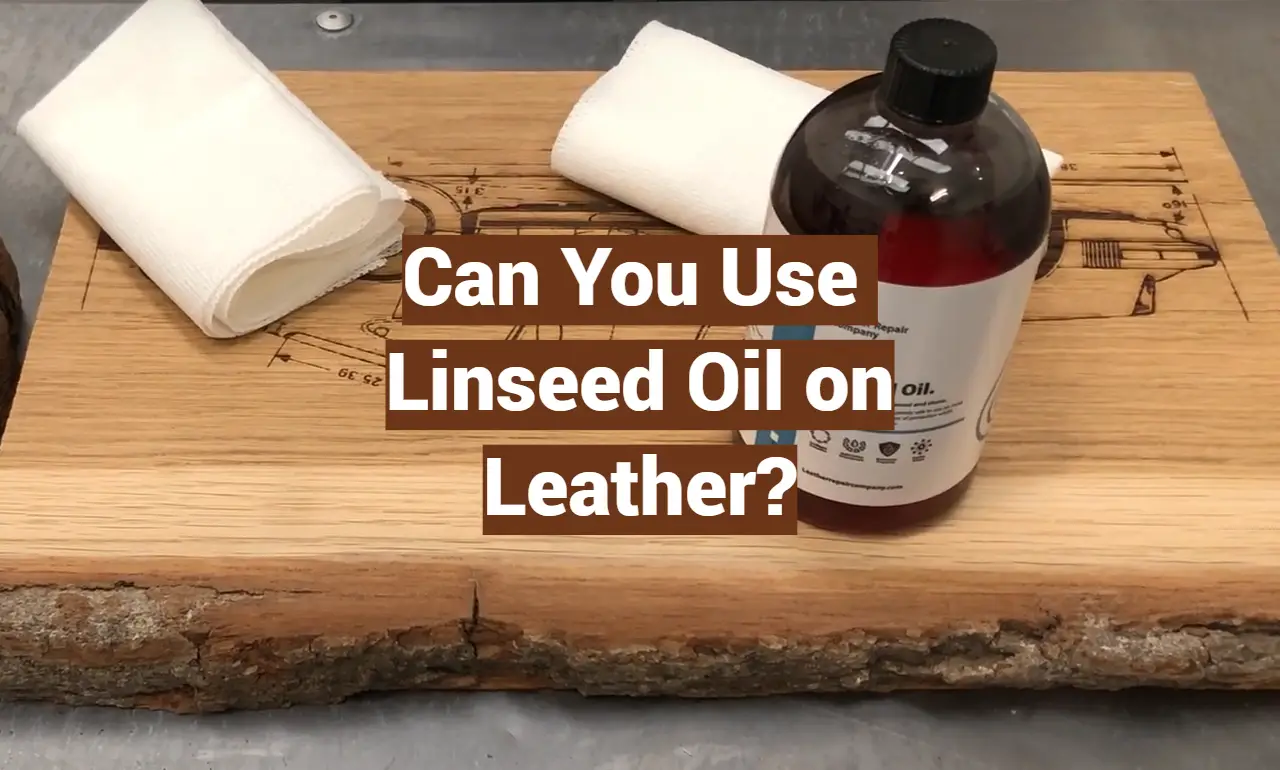


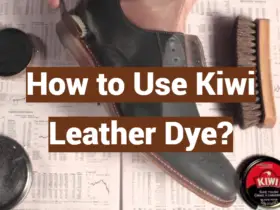


I’ve been using linseed oil on all my leather goods for years. Just a small amount restores suppleness and protects the leather from drying out. It’s a completely natural product that nourishes the leather. I apply it sparingly with a clean rag and let it soak in overnight. My leather boots, jackets, purses, wallets, etc are kept supple this way. Highly recommend linseed oil for conditioning leather.
After reading about it online, I tried using boiled linseed oil on my favorite leather jacket. I rubbed a thin coat into the leather and let it sit overnight. It seemed to darken and enrich the color while making the leather more soft and flexible. It didn’t leave any oily residue behind either. Boiled linseed oil is now my go-to leather conditioner.
I recently started using linseed oil on all my leather goods and it’s made a huge difference! My bags and shoes that were dried out and cracking are now soft and supple again. Just a small amount of linseed oil massaged into the leather restores it wonderfully. I’m so glad I discovered this natural oil for rejuvenating my leather items.
Is linseed oil good for leather? Absolutely! I use it on all my leather boots and they stay protected and flexible even after heavy use. The natural oils in linseed oil keep the leather from drying out and cracking. I apply a light coat and let it soak in fully. It restores the rich color too. Linseed oil is definitely my leather boot saver!
I was skeptical about using boiled linseed oil on leather but took a chance on an old leather jacket. After two light applications, the leather was remarkably rejuvenated! It absorbed beautifully into the cracks and restored the suppleness. The color deepened as well. I’m sold on boiled linseed oil for conditioning dry, damaged leather goods. It really works!
I had a vintage leather bag that was dried out and stiff. After researching leather conditioners, I settled on trying boiled linseed oil. I gently rubbed it into the cracked leather and let it sit overnight. In the morning, the leather was supple again! This natural oil brought the bag back to life. Boiled linseed oil is amazing on old leather.
For years I used regular linseed oil on all our leather shoes, bags, jackets, etc. It worked great at first but then seemed to make the leather overly soft and eventually start deteriorating. I’ve now switched to using boiled linseed oil on all our leather goods and it works much better. The leather stays strong and supple without getting spongy. Highly recommend boiled linseed oil for leather care.
I was looking for a natural conditioner for my leather couch and found boiled linseed oil does wonders! After a light application allowed to soak in overnight, the leather was soft, supple and richly colored again. It even worked beautifully on scuffs and scratches. Boiled linseed oil is now my go-to for restoring and protecting leather furniture. I’m thrilled with the results.
Can you use linseed oil on leather? I did some research and tried it on an old dried out leather bag. Used sparingly, it noticeably rejuvenated the flexibility and richness of the leather. It absorbed fully without leaving residue too. So yes, linseed oil is great for restoring suppleness to dried leather! I’m a believer now.
I used boiled linseed oil on all my leather boots and shoes this season and it kept them remarkably protected through the harsh winter. The leather stayed supple and conditioned despite the cold dry air. Just an occasional light application kept them soft and resilient all season long. Boiled linseed oil is definitely my leather protector now!
Leather items definitely benefit from boiled linseed oil. I’ve used it on luggage, boots, jackets, purses and even a leather desk. It soaks in beautifully and conditions the leather perfectly. No more dried out, cracking leather since I started using boiled linseed oil regularly on our leather goods. This stuff really works wonders!
I was about to toss out an old cracked leather bag when I came across info on rejuvenating leather with boiled linseed oil. After two light applications, the leather was amazingly restored! This natural oil brought the suppleness back and enriched the color too. My bag looks great again thanks to boiled linseed oil. Now I use it on all my leather accessories.